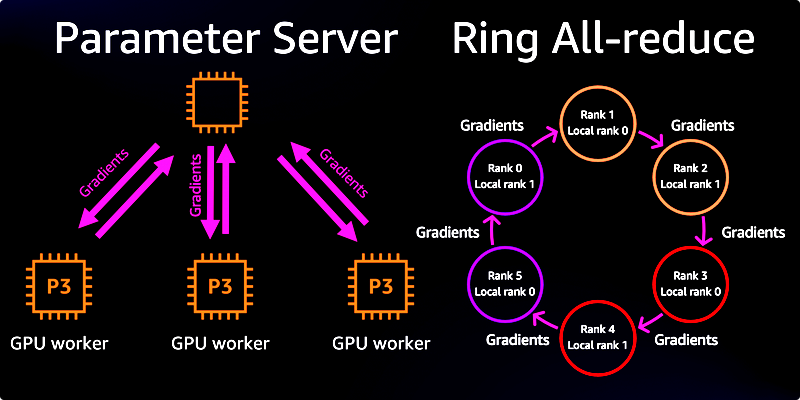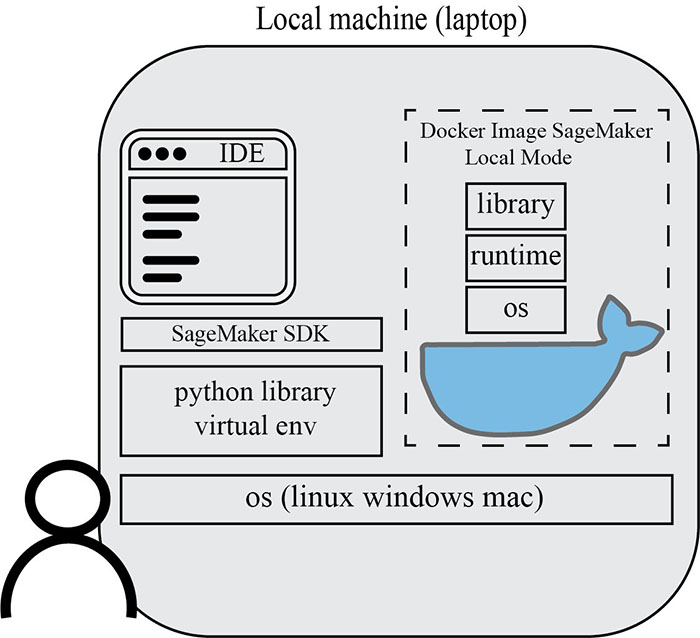AWS Machine Learning Blog
Category: Tensorflow on AWS
Run machine learning inference workloads on AWS Graviton-based instances with Amazon SageMaker
Today, we are launching Amazon SageMaker inference on AWS Graviton to enable you to take advantage of the price, performance, and efficiency benefits that come from Graviton chips. Graviton-based instances are available for model inference in SageMaker. This post helps you migrate and deploy a machine learning (ML) inference workload from x86 to Graviton-based instances […]
Best practices for TensorFlow 1.x acceleration training on Amazon SageMaker
Today, a lot of customers are using TensorFlow to train deep learning models for their clickthrough rate in advertising and personalization recommendations in ecommerce. As the behavior of their clients change, they can accumulate large amounts of new data every day. Model iteration is one of a data scientist’s daily jobs, but they face the […]
Train and deploy deep learning models using JAX with Amazon SageMaker
Amazon SageMaker is a fully managed service that enables developers and data scientists to quickly and easily build, train, and deploy machine learning (ML) models at any scale. Typically, you can use the pre-built and optimized training and inference containers that have been optimized for AWS hardware. Although those containers cover many deep learning workloads, you may have […]
Run your TensorFlow job on Amazon SageMaker with a PyCharm IDE
As more machine learning (ML) workloads go into production, many organizations must bring ML workloads to market quickly and increase productivity in the ML model development lifecycle. However, the ML model development lifecycle is significantly different from an application development lifecycle. This is due in part to the amount of experimentation required before finalizing a […]
Deploy variational autoencoders for anomaly detection with TensorFlow Serving on Amazon SageMaker
Anomaly detection is the process of identifying items, events, or occurrences that have different characteristics from the majority of the data. It has many applications in various fields, like fraud detection for credit cards, insurance, or healthcare; network intrusion detection for cybersecurity; KPI metrics monitoring for critical systems; and predictive maintenance for in-service equipment. There […]
How Contentsquare reduced TensorFlow inference latency with TensorFlow Serving on Amazon SageMaker
In this post, we present the results of a model serving experiment made by Contentsquare scientists with an innovative DL model trained to analyze HTML documents. We show how the Amazon SageMaker TensorFlow Serving solution helped Contentsquare address several serving challenges. Contentsquare’s challenge Contentsquare is a fast-growing French technology company empowering brands to build better […]
Maximize TensorFlow performance on Amazon SageMaker endpoints for real-time inference
Machine learning (ML) is realized in inference. The business problem you want your ML model to solve is the inferences or predictions that you want your model to generate. Deployment is the stage in which a model, after being trained, is ready to accept inference requests. In this post, we describe the parameters that you […]
Creating an end-to-end application for orchestrating custom deep learning HPO, training, and inference using AWS Step Functions
Amazon SageMaker hyperparameter tuning provides a built-in solution for scalable training and hyperparameter optimization (HPO). However, for some applications (such as those with a preference of different HPO libraries or customized HPO features), we need custom machine learning (ML) solutions that allow retraining and HPO. This post offers a step-by-step guide to build a custom deep […]
Implement checkpointing with TensorFlow for Amazon SageMaker Managed Spot Training
Customers often ask us how can they lower their costs when conducting deep learning training on AWS. Training deep learning models with libraries such as TensorFlow, PyTorch, and Apache MXNet usually requires access to GPU instances, which are AWS instances types that provide access to NVIDIA GPUs with thousands of compute cores. GPU instance types […]
Using container images to run TensorFlow models in AWS Lambda
TensorFlow is an open-source machine learning (ML) library widely used to develop neural networks and ML models. Those models are usually trained on multiple GPU instances to speed up training, resulting in expensive training time and model sizes up to a few gigabytes. After they’re trained, these models are deployed in production to produce inferences. […]








